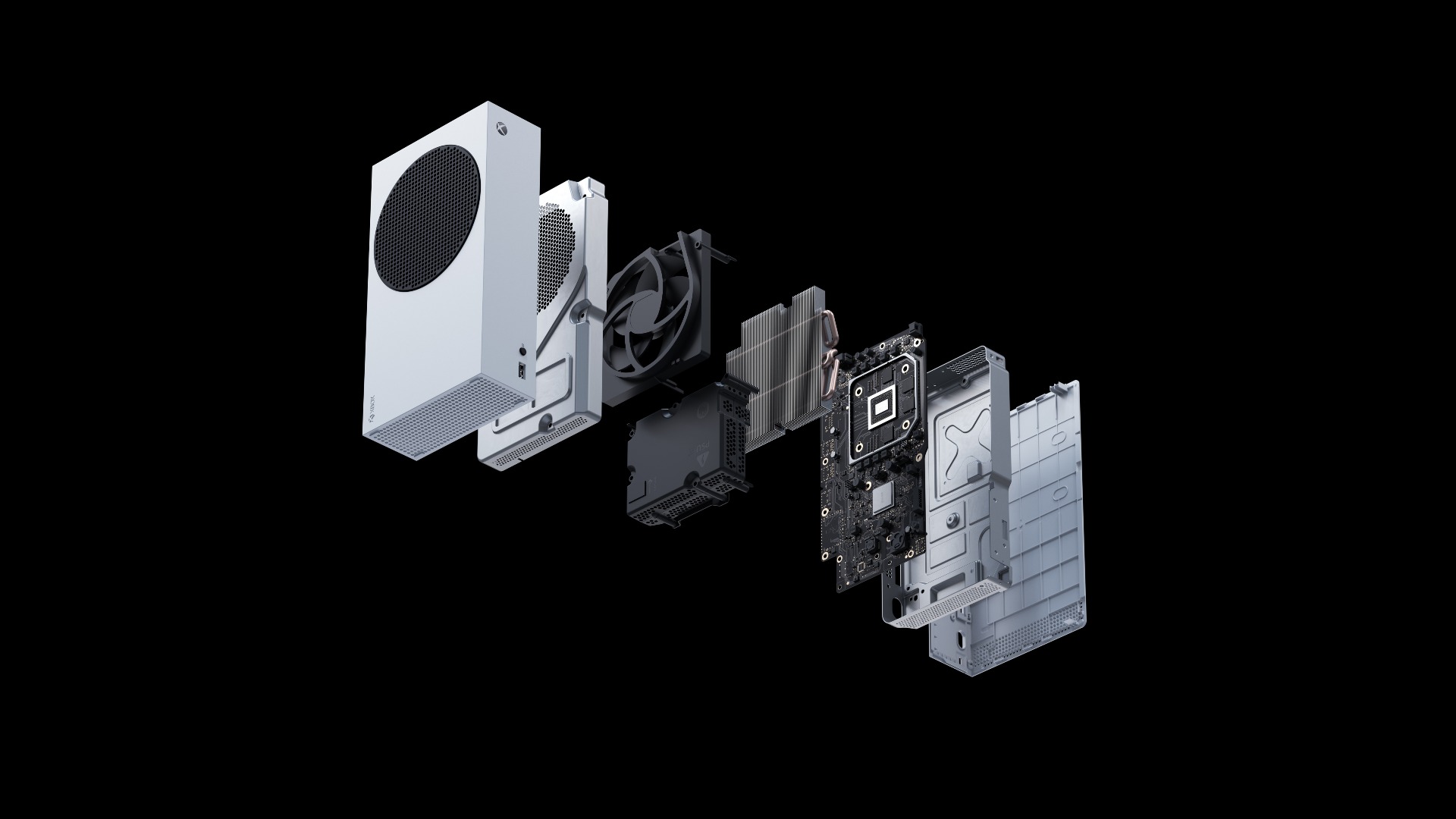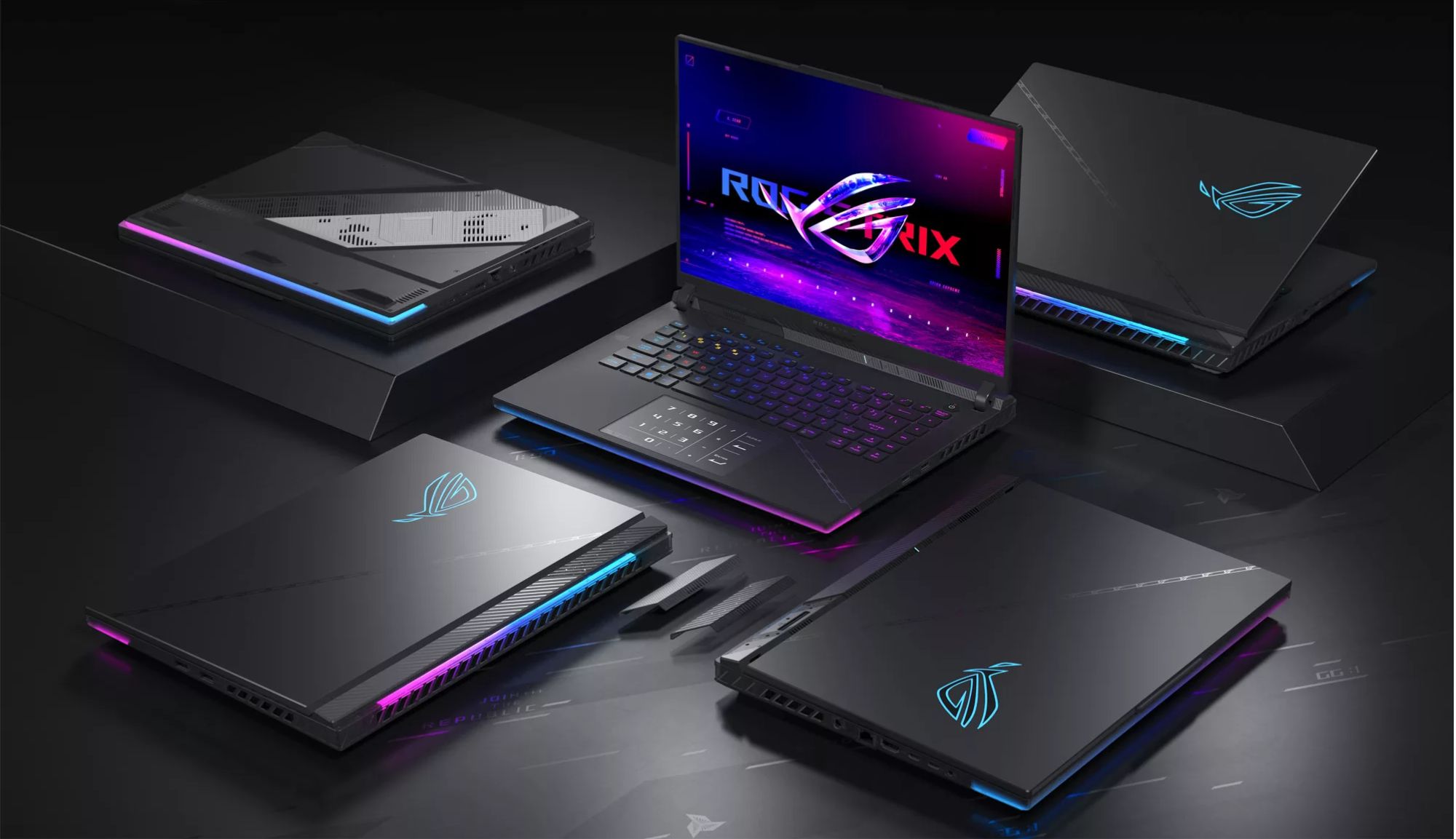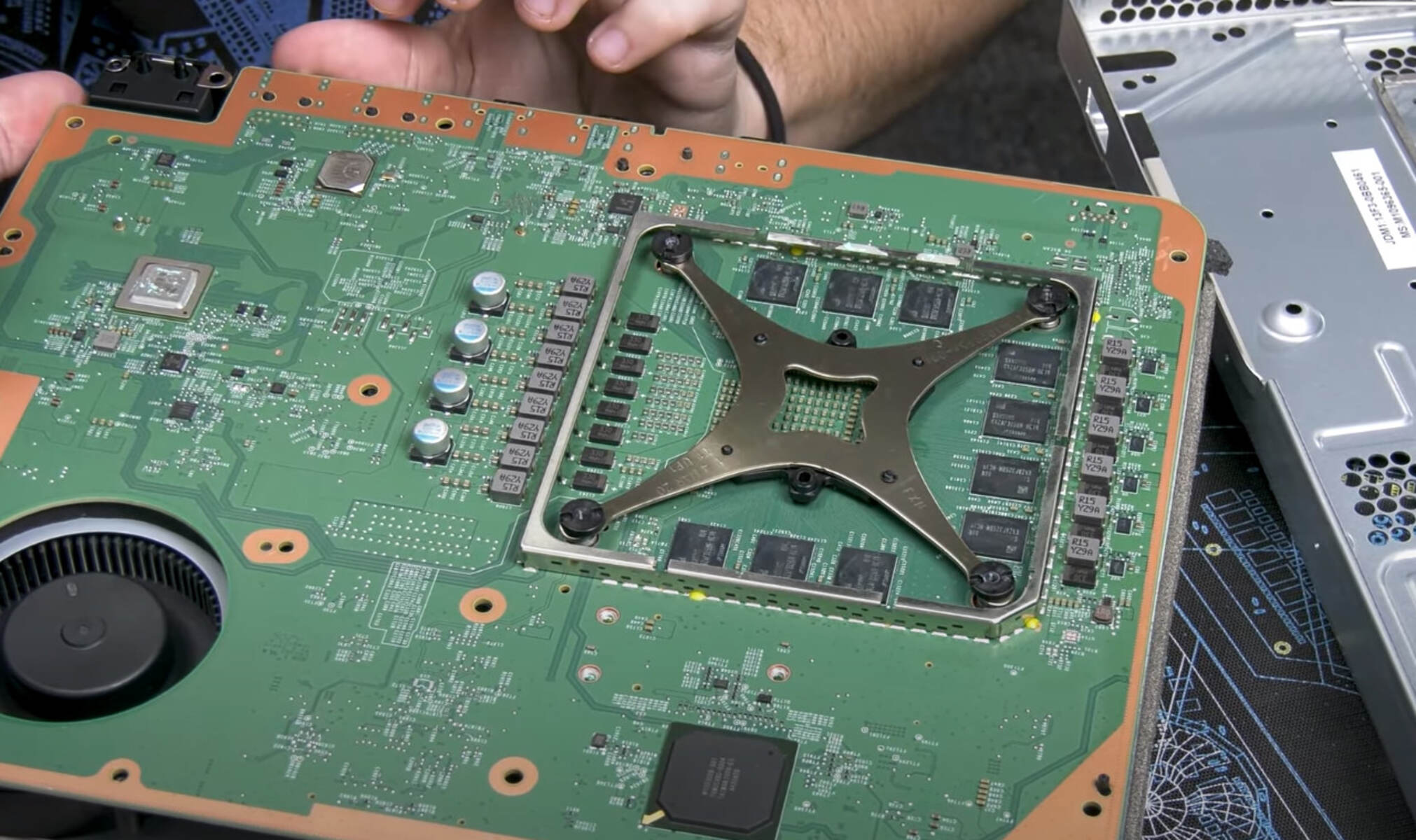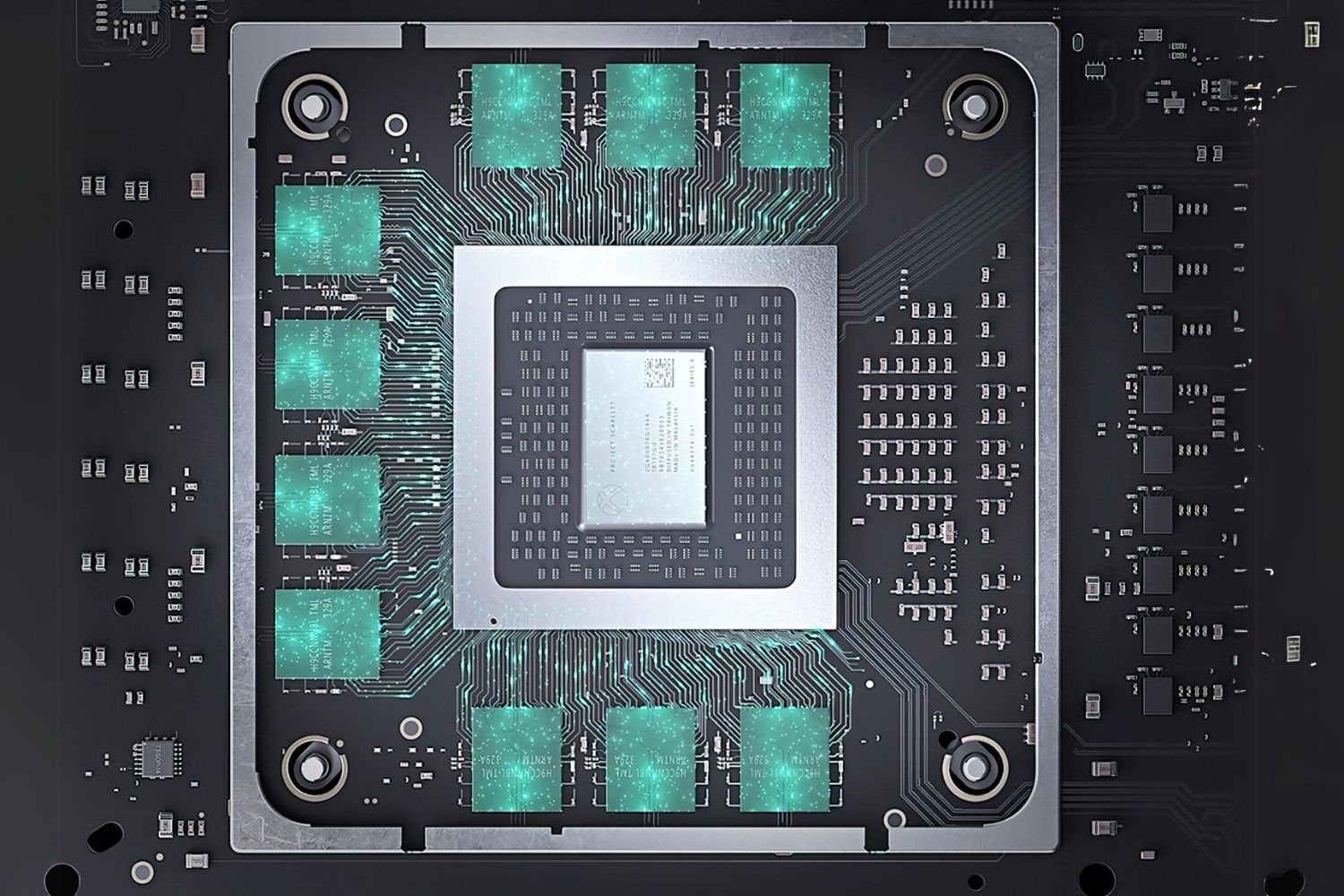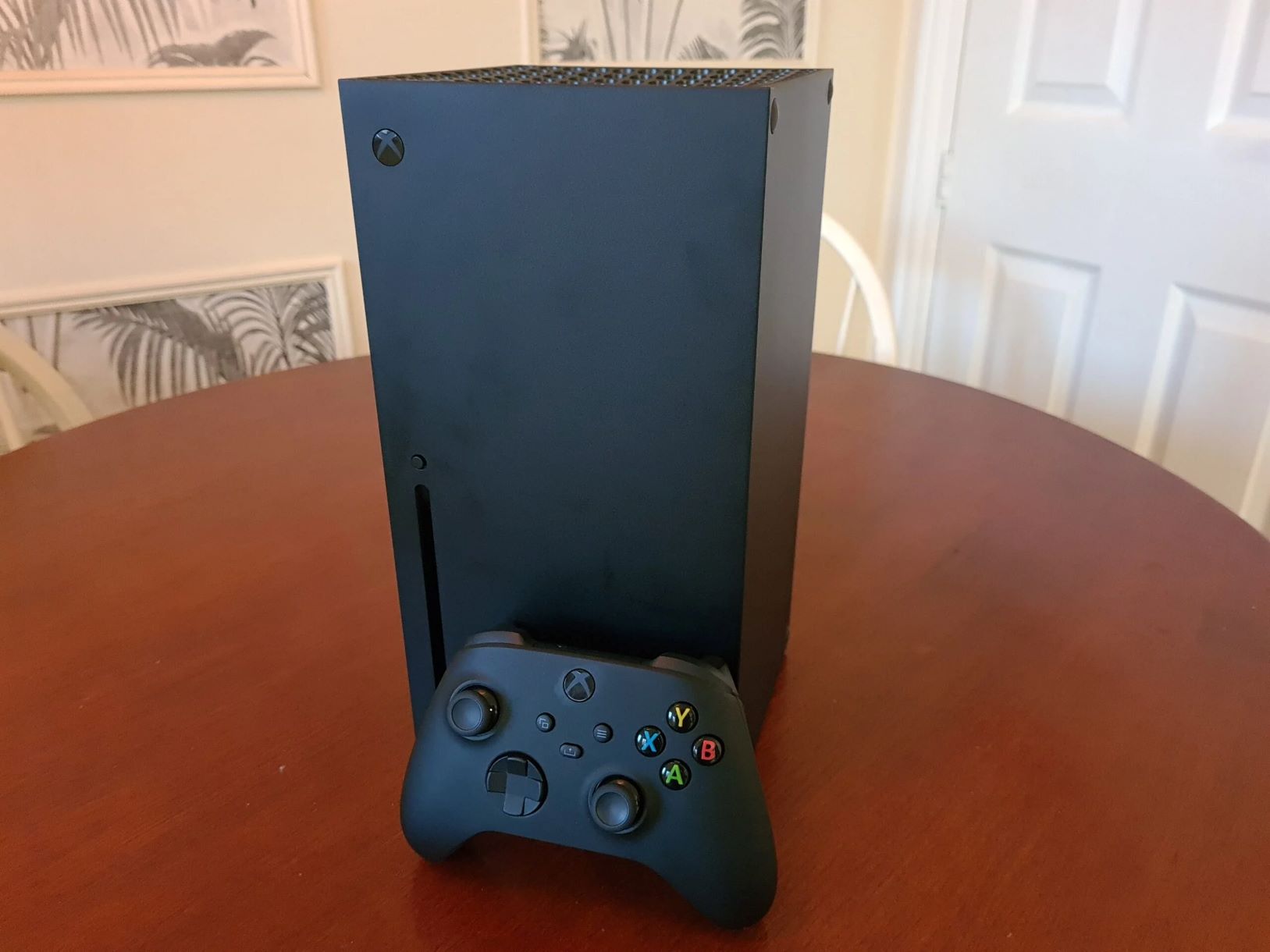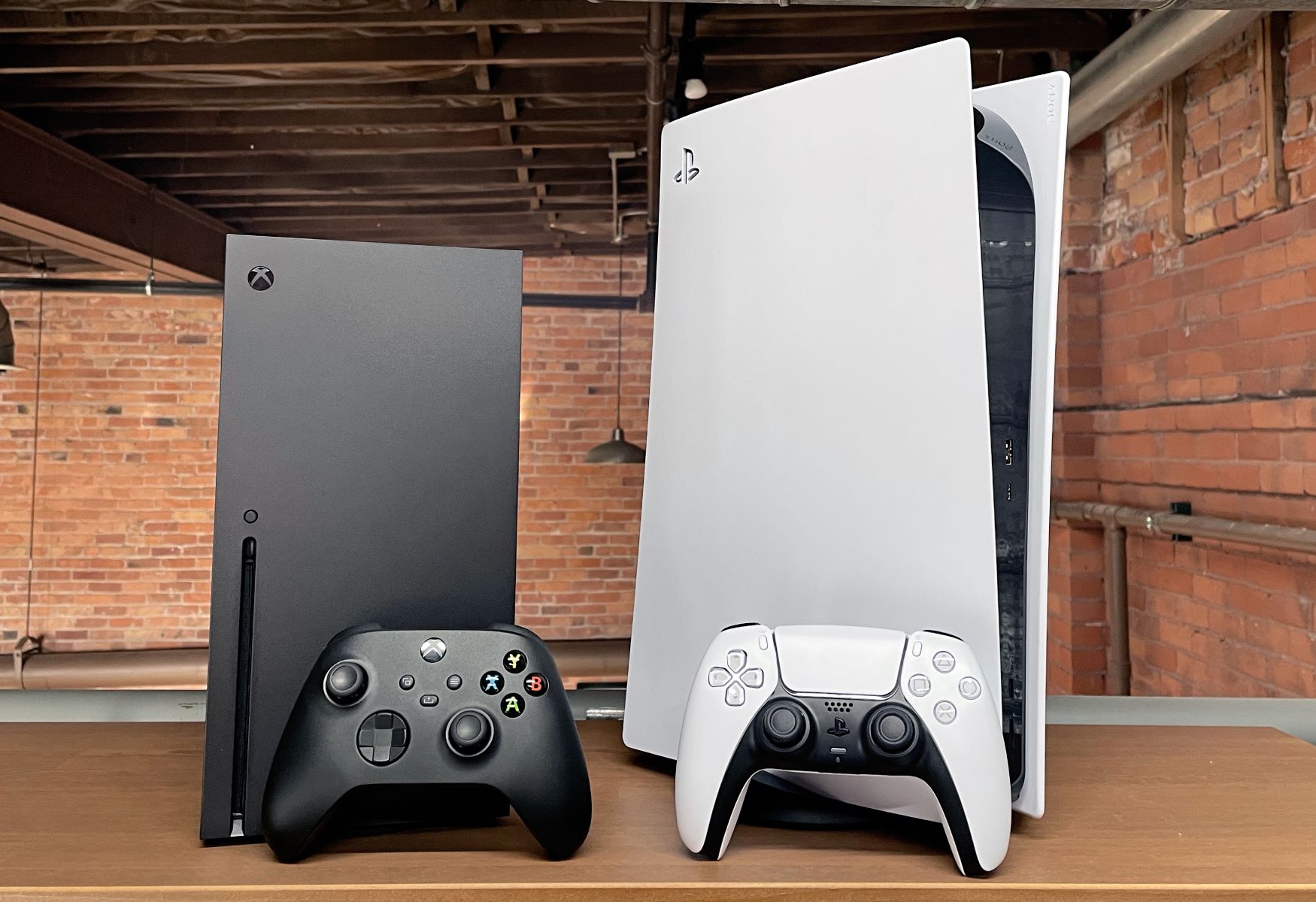Introduction
Welcome to the world of Xbox Series S, where gaming meets cutting-edge technology. The next generation of console gaming has arrived, and one key component that powers the immersive gaming experience is the graphics card. In this article, we will dive into the details of the graphics card that the Xbox Series S is equipped with, unraveling the secrets behind its impressive graphical capabilities.
The Xbox Series S, a popular choice among gamers, is the little brother to the Xbox Series X. While it may be smaller in size, it still packs a punch when it comes to performance. One of the key factors contributing to its incredible visuals is its graphics card, which plays a vital role in rendering lifelike environments and delivering stunning graphics.
The graphics card, also known as the GPU (Graphics Processing Unit), is a crucial component in any gaming system. It is responsible for rendering images, textures, and visual effects in real-time, enabling gamers to experience seamless gameplay and stunning visuals. Without a powerful graphics card, games would lack the immersive graphics that make them come to life.
Now let’s take a closer look at the specifications of the graphics card in the Xbox Series S. Understanding its features will give us a better understanding of the console’s graphical capabilities and what sets it apart from its competitors.
What is the Xbox Series S?
The Xbox Series S is a next-generation gaming console developed by Microsoft. It is the more affordable counterpart to the Xbox Series X, offering a budget-friendly option for gamers who still want to enjoy the latest gaming experiences.
While the Xbox Series X is designed to deliver the highest level of performance and graphical fidelity, the Xbox Series S focuses on providing a solid gaming experience at a lower price point. The console features a compact design and is perfect for those who have limited space or prefer a more subtle aesthetic.
One of the standout features of the Xbox Series S is its impressive graphics capabilities. Despite its smaller size and lower price, it still offers stunning visuals that immerse players in their favorite games. This is made possible by its powerful graphics card, which is optimized for performance and efficiency.
In addition to its graphics capabilities, the Xbox Series S also supports features such as high dynamic range (HDR) for more vibrant and realistic colors, as well as faster load times thanks to its solid-state drive (SSD).
Furthermore, the Xbox Series S is part of the Xbox ecosystem, which means it benefits from features like Xbox Game Pass, allowing players to access a vast library of games for a monthly subscription fee. Additionally, it supports backward compatibility, so players can enjoy their favorite Xbox One, Xbox 360, and even some original Xbox games on the console.
Overall, the Xbox Series S is a great option for gamers looking to enter the next generation of gaming without breaking the bank. With its powerful graphics card and other impressive features, it offers a remarkable gaming experience and ensures that players can enjoy the latest titles with stunning graphics and smooth performance.
The Importance of Graphics Cards in Gaming
Graphics cards play a crucial role in the gaming experience, determining the quality of visuals, frame rates, and overall performance. Whether you’re exploring captivating open-world environments or engaging in intense multiplayer battles, a powerful graphics card is essential for an immersive and enjoyable gaming experience.
One of the primary functions of a graphics card is to render and display images in real-time. It takes the data from the game and translates it into stunning visuals on your screen. The more powerful the graphics card, the more details and effects it can handle, resulting in crisp textures, vibrant colors, and realistic lighting.
But graphics cards aren’t just about aesthetics. They also affect the frame rate, or the number of frames displayed per second. A high frame rate is crucial for smooth gameplay, ensuring that your actions are registered and displayed without any noticeable lag. With a powerful graphics card, you can enjoy games with higher frame rates, resulting in more responsive controls and a more fluid gaming experience.
Additionally, graphics cards are essential for enabling advanced graphical features such as ray tracing. Ray tracing technology simulates how light interacts with objects, creating lifelike reflections, shadows, and ambient lighting. This adds a new level of realism to games, making them visually stunning and enhancing immersion.
Another important aspect of graphics cards is their ability to handle higher resolutions. With the increasing popularity of 4K and even 8K displays, a powerful graphics card is necessary to deliver high-resolution graphics without sacrificing performance. Higher resolutions offer sharper and more detailed visuals, making everything from character models to environmental details appear more lifelike.
Ultimately, the importance of graphics cards in gaming cannot be overstated. They are the driving force behind the stunning visuals, smooth performance, and immersive experiences that modern games offer. Whether you’re a casual gamer or a hardcore enthusiast, investing in a powerful graphics card will undoubtedly enhance your gaming experience and allow you to fully appreciate the artistry and craftsmanship that goes into creating these virtual worlds.
Xbox Series S Graphics Card Specifications
The Xbox Series S is equipped with a custom graphics card designed specifically for this console. While it may not be as powerful as the graphics card in its counterpart, the Xbox Series X, it still delivers impressive performance and stunning visuals.
The graphics card in the Xbox Series S is based on the RDNA 2 architecture, which is a significant upgrade over the previous generation of graphics technology. This architecture brings several improvements in terms of performance, efficiency, and visual fidelity.
In terms of raw specifications, the Xbox Series S graphics card features 20 compute units running at a clock speed of 1.55 GHz. This translates to a maximum performance of 4 teraflops, which is a significant boost compared to the Xbox One X. While it may not be able to handle demanding games at 4K resolution, it is more than capable of delivering smooth gameplay at lower resolutions.
One of the standout features of the Xbox Series S graphics card is that it supports DirectX Raytracing. This advanced technology allows for more realistic light reflections, shadows, and global illumination in games. With ray tracing, the graphics card can simulate the behavior of light, resulting in more immersive and visually stunning environments.
In addition to ray tracing, the Xbox Series S graphics card also supports Variable Rate Shading (VRS) and Mesh Shading. VRS allows for more efficient use of GPU resources by adjusting the level of detail in different areas of the screen, focusing on the portions that require more attention while reducing the workload on less noticeable areas. Mesh Shading, on the other hand, improves performance by utilizing a more efficient method of processing geometry in games.
Overall, the graphics card in the Xbox Series S may not compete with the high-end options available in the gaming market, but it is a formidable choice for gamers on a budget. It delivers impressive performance, supports advanced graphical features like ray tracing, and ensures a smooth and visually appealing gaming experience.
GPU Architecture
The GPU architecture of the Xbox Series S is based on the RDNA 2 (Radeon DNA 2) architecture, which is developed by AMD specifically for next-generation gaming consoles. This architecture brings significant improvements in performance, power efficiency, and advanced graphical features.
The RDNA 2 architecture is a leap forward from its predecessor, offering a more refined design and enhanced compute capabilities. It features a new compute unit (CU) design, which allows for better utilization of resources and improved performance per Watt. This means that the Xbox Series S can deliver impressive graphics while keeping power consumption at a reasonable level.
One of the key advancements of the RDNA 2 architecture is the support for hardware-accelerated ray tracing. Ray tracing is a rendering technique that simulates the behavior of light in a scene, resulting in more realistic lighting, reflections, and shadows. With dedicated ray tracing hardware in the GPU, the Xbox Series S can produce stunning visual effects and create more immersive gaming environments.
In addition to ray tracing, the RDNA 2 architecture also introduces other advanced features, such as Variable Rate Shading (VRS) and Mesh Shading. VRS allows developers to dynamically adjust the shading rate in different areas of the screen, allocating more processing power to important details and conserving resources in less noticeable areas. Mesh Shading, on the other hand, improves performance by efficiently processing the geometry of 3D models in games.
Furthermore, the RDNA 2 architecture includes other optimizations to enhance performance and graphics quality. The GPU features a high-speed memory subsystem and advanced memory compression technologies, allowing for faster data transfer and improved efficiency. This results in reduced loading times, smoother frame rates, and improved overall gaming experiences.
Overall, the GPU architecture of the Xbox Series S represents a significant step forward in graphical capabilities. With the power of the RDNA 2 architecture, the console can deliver stunning visuals, advanced graphical effects, and an immersive gaming experience. Whether you’re exploring vast open worlds or engaging in fast-paced action, the GPU architecture of the Xbox Series S ensures that you can enjoy games with impressive graphics and smooth performance.
Custom RDNA 2 Features
In addition to the standard RDNA 2 architecture, the Xbox Series S has its own set of custom features that further enhance its graphical capabilities. These customizations are specifically designed to optimize performance, improve visuals, and deliver an exceptional gaming experience on the console.
One of the notable custom features of the Xbox Series S is the Xbox Velocity Architecture. This architecture combines a custom NVMe SSD (Solid State Drive) with dedicated hardware decompression, allowing for lightning-fast loading times and seamless world streaming. With this architecture, games can take advantage of the high-speed SSD to deliver immersive and uninterrupted gameplay experiences.
Another custom feature is the Sampler Feedback Streaming (SFS) technology. SFS allows the GPU to dynamically load and prioritize texture data, reducing memory usage and improving performance. This translates to smoother gameplay, reduced pop-in of textures, and increased overall graphical fidelity. With the advanced SFS technology, the Xbox Series S can deliver breathtaking visuals without compromising performance.
Furthermore, the Xbox Series S benefits from the custom-designed AMD Zen 2 CPU (Central Processing Unit) architecture, which works in harmony with the GPU to deliver impressive gaming performance. The CPU architecture features multiple cores and threads, enabling faster processing of game logic, physics simulations, and AI computations. This ensures that the console can handle complex gaming scenarios with ease, resulting in smoother gameplay and improved responsiveness.
Additionally, the Xbox Series S features hardware-accelerated DirectML (Direct Machine Learning) capabilities. With machine learning advancements, the console can leverage the power of AI and perform tasks like noise reduction, upscaling, and other visual enhancements in real-time. This enhances the overall graphical quality and brings lifelike details to the screen, making games look more immersive and visually stunning.
Overall, the custom RDNA 2 features in the Xbox Series S make a significant difference in terms of performance and graphical output. The Xbox Velocity Architecture, Sampler Feedback Streaming, custom CPU architecture, and hardware-accelerated DirectML all work together to deliver an optimized and visually impressive gaming experience on the console. These customizations ensure that the Xbox Series S stands out among its competitors and offers gamers a next-generation gaming experience without breaking the bank.
Ray Tracing Capabilities
Ray tracing is a revolutionary technology that brings a new level of realism and immersion to gaming, and the Xbox Series S is equipped with the necessary hardware to support this advanced graphical feature. Ray tracing allows for accurate simulation of how light behaves in a virtual environment, resulting in stunning visual effects such as realistic reflections, shadows, and ambient occlusion.
The Xbox Series S utilizes hardware-accelerated ray tracing, which means that the dedicated hardware in the graphics card is specifically designed to handle the complex calculations required for ray tracing. This allows for real-time rendering of ray-traced effects, enabling developers to create highly immersive and visually striking game worlds.
With ray tracing, games on the Xbox Series S can achieve lifelike reflections that accurately depict the surrounding environment. Whether it’s the reflection of a character model in a shiny surface, the reflection of light on a puddle, or the reflection of an explosion on a metallic surface, ray tracing brings these reflections to life, adding an extra layer of realism and depth to the visuals.
In addition to reflections, ray tracing also enhances the quality of shadows in games. With accurate shadow rendering, objects cast more realistic and precise shadows, creating a greater sense of depth and immersion. Whether it’s a character moving through a sunlit forest or a vehicle driving through a dimly lit street, ray tracing ensures that the shadows are rendered realistically, enhancing the overall visual fidelity of the game.
Ambient occlusion is another aspect of ray tracing that greatly improves the realism of in-game environments. Ambient occlusion simulates how light is blocked or diffused by nearby objects, resulting in more accurate and believable lighting conditions. This leads to more realistic interactions between objects, better-defined edges, and a more cohesive and visually appealing game world.
By implementing ray tracing technology, the Xbox Series S takes games to the next level in terms of visual fidelity. It brings cinematic-quality graphics to the console, immersing players in believable and atmospheric game environments. From the smallest details to the overall lighting and reflections, ray tracing enhances every aspect of the visuals, making games on the Xbox Series S an extraordinary visual experience.
Framerate and Resolution
Framerate and resolution are two important factors that greatly influence the gaming experience, and the Xbox Series S offers impressive capabilities in both areas. While it may not match the extreme performance of its counterpart, the Xbox Series X, the Series S still delivers smooth gameplay and visually stunning graphics.
When it comes to framerate, the Xbox Series S aims for a balance between performance and visuals. The console is capable of delivering up to 120 frames per second (fps) in certain games, making for incredibly smooth and responsive gameplay. This high framerate ensures that fast-paced action sequences remain fluid, maximizing players’ control and immersion in the game world.
Additionally, the Xbox Series S supports Variable Refresh Rate (VRR) technology, which synchronizes the display’s refresh rate with the console’s output framerate. This eliminates screen tearing and provides a much smoother and more enjoyable gaming experience, especially during intense gameplay moments.
In terms of resolution, the Xbox Series S is designed to deliver great visuals at a lower cost. It supports a maximum resolution of up to 1440p, providing sharp and detailed visuals on compatible displays. While it may not offer native 4K resolution like the Xbox Series X, the Series S employs advanced upscaling techniques to deliver a visually impressive image on higher-resolution screens.
The console also benefits from advanced graphical features like HDR (High Dynamic Range), which enhances the color and contrast range of games, resulting in more vibrant and realistic visuals. HDR brings games to life by accurately representing the full spectrum of colors and capturing the subtle nuances of light and shadow.
It’s important to note that game developers have some flexibility in terms of how they prioritize performance and visuals on the Xbox Series S. Some games may prioritize framerate to deliver a smoother experience, while others may focus more on resolution and visual fidelity. This allows developers to optimize their games based on their artistic vision and gameplay requirements.
Overall, while the Xbox Series S may not offer the same level of performance as its more powerful counterpart, it still delivers impressive framerate and resolution capabilities. The console provides smooth gameplay, high frame rates, and visually appealing graphics, ensuring an immersive and enjoyable gaming experience for gamers on a budget.
Performance Comparison with Other Consoles
When it comes to performance, the Xbox Series S stands as a formidable choice among its console counterparts. While it may not possess the raw power of the Xbox Series X or other high-end gaming systems, it still offers impressive performance and graphical capabilities.
Compared to its predecessor, the Xbox One S, the Xbox Series S delivers a significant boost in performance. With its custom RDNA 2 graphics card and optimized CPU, the Series S can handle more demanding games and deliver improved visuals and smoother gameplay.
In terms of resolution, the Xbox Series S offers up to 1440p, providing sharp and detailed visuals on compatible displays. While it may not support native 4K resolution like the Xbox Series X, the upscaling technology employed by the Series S ensures that games still look visually impressive on higher-resolution screens.
When comparing the Xbox Series S to competing consoles, such as the PlayStation 5 (PS5), it’s important to consider that each system has its strengths and trade-offs. The Xbox Series S focuses on delivering a budget-friendly gaming experience with competitive performance, while the PS5 emphasizes cutting-edge visuals and performance at a higher price point.
While the PS5 may outperform the Xbox Series S in terms of raw power, it’s essential to note that the actual gaming experience can vary based on factors such as game optimization, developer choices, and individual preferences. Some games may prioritize certain features or visual effects that may be more prominent on one console over the other.
It’s also important to consider the size and form factor of the Xbox Series S, which is significantly smaller than the PS5 and many other competing consoles. This makes the Series S a great option for those with limited space or who prefer a more compact gaming setup.
Ultimately, the Xbox Series S offers an impressive balance of performance, affordability, and graphical capabilities. While it may not have the same level of graphical prowess as high-end consoles, it still packs a punch and provides a delightful gaming experience that appeals to a wide range of gamers.
Conclusion
The Xbox Series S is a budget-friendly yet powerful gaming console that offers an exceptional gaming experience. Its graphics card, based on the RDNA 2 architecture, delivers impressive visuals and supports features like ray tracing, enhancing the overall immersion in games.
The console’s performance, with its high frame rates and up to 1440p resolution, ensures smooth gameplay and visually stunning graphics. While it may not match the raw power of its high-end counterparts, the Xbox Series S strikes an excellent balance between performance and affordability.
With its custom features, such as the Xbox Velocity Architecture and hardware-accelerated DirectML, the Xbox Series S optimizes loading times, enhances visual fidelity, and brings lifelike details to the screen.
Comparing the Xbox Series S to other consoles, it holds its own against competitors, offering a unique combination of performance, pricing, and compact form factor. While it may not match the graphical capabilities of its more powerful counterpart or competitors in every aspect, it still delivers an immersive gaming experience that satisfies the majority of gamers.
Overall, the Xbox Series S is a compelling choice for gamers on a budget who still want to experience the next generation of gaming. Its powerful graphics card, impressive performance, and array of features ensure that players can enjoy their favorite games with stunning visuals and smooth gameplay. Whether you’re exploring vast virtual worlds or engaging in intense battles, the Xbox Series S delivers on its promise of providing an exceptional gaming experience at an affordable price.







